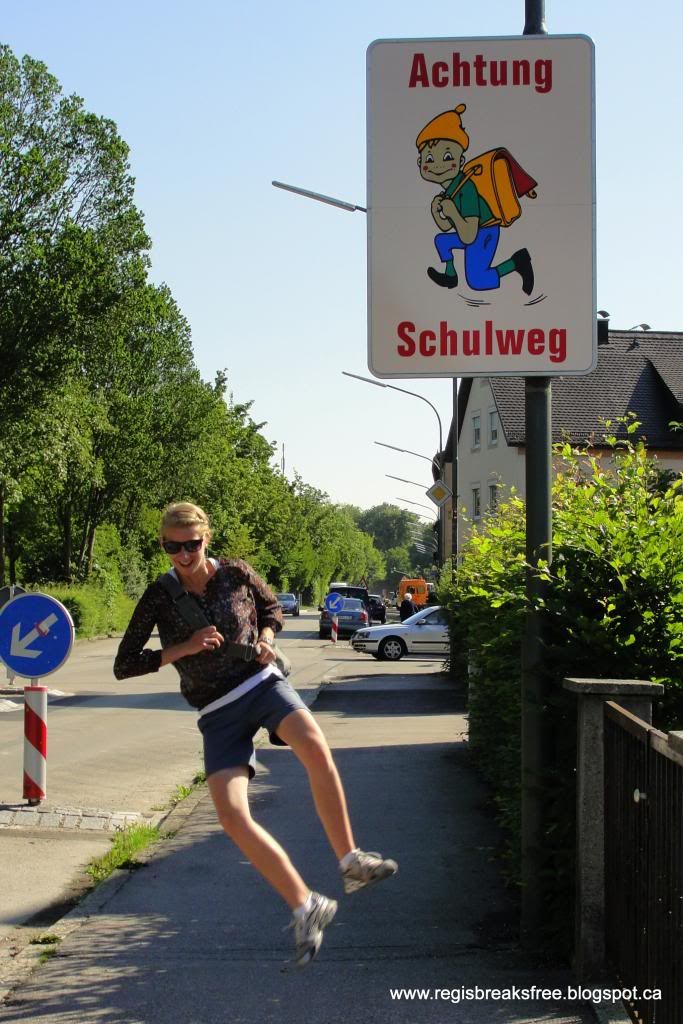 |
| Pre-visit we are in high spirits! |
Because we had only planned a few days in Germany, we had to get down to business right after our arrival in Munich. Our first stop was to visit an important historical site: the Dachau Concentration Camp Memorial. After we dropped our luggage off at our hostel we caught the metro to the quiet town where the site is located. It took a while for us to find the route to the Memorial from the terminal, but eventually we arrived and got ourselves some electronic audio guides (3.50 EURO).
 |
| A little ways off from the memorial site you can see these tracks. The trains that ran on them were used to bring prisoners into the concentration camp. |
It was an absolutely stunning day weather-wise, and though the memorial was relatively busy with tourists, it was a very quiet and respectful atmosphere. I had difficulty reconciling my knowledge of its nightmarish past with the bright sunny day, where the birds chirped and a soft breeze rustled the leaves. It was a weird contrast to experience.
 |
| The officer's houses were not far from the work camp. In fact the entire camp was hardly 10 minutes walk from the town of Dachau. |
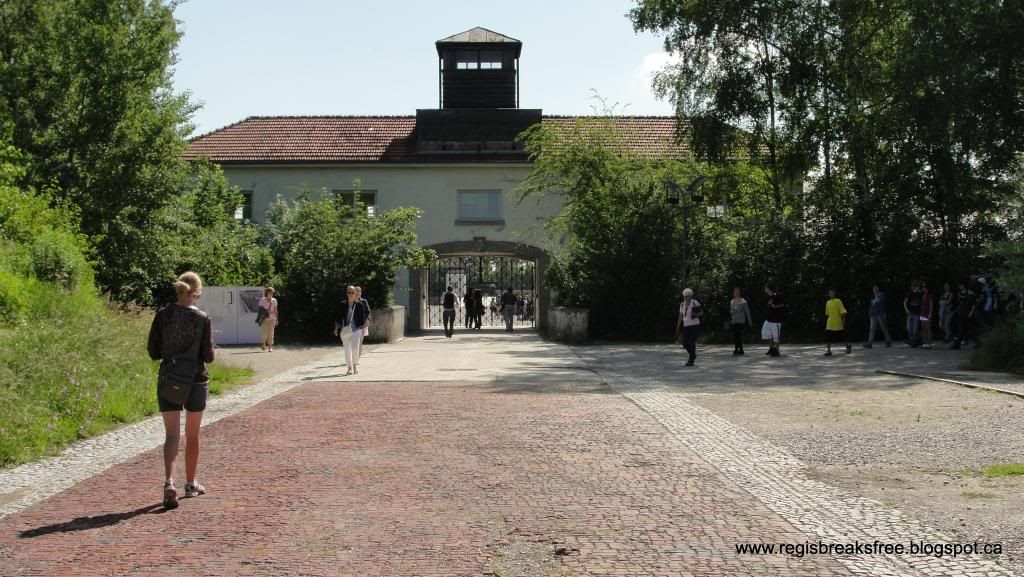 |
| Walking up to the front gates. |
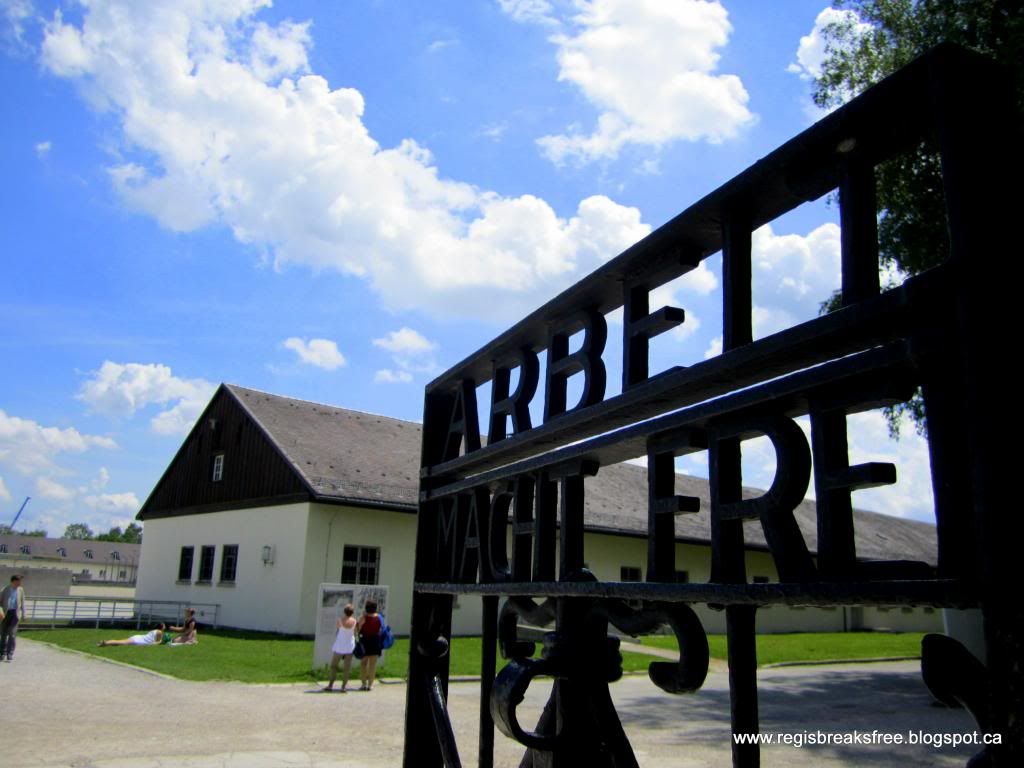 |
| "Arbeit macht frei" |
Their details were recorded, they were made to give up their valuables and to undress completely, their heads were shaved, and then they were disinfected, showered, and given a uniform with a different colored badge being awarded for every different "crime" (ie: being Jewish, a priest, a political prisoner, homosexual, etc).
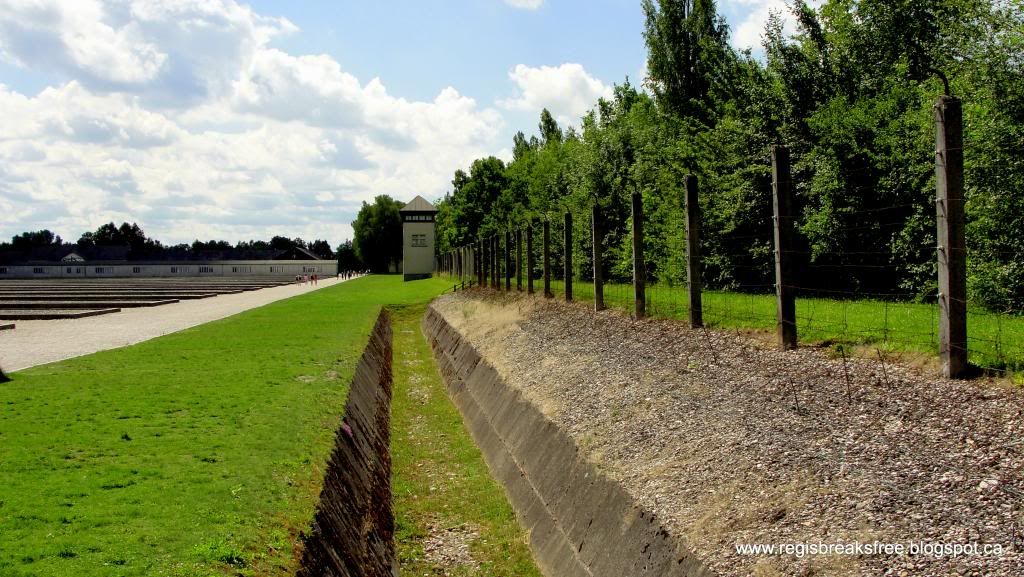 |
| The ditch and electrified barbed wire fence made escape almost impossible, even if it weren't for the armed guards. To the left you can see the outlines of where the barracks used to be. |
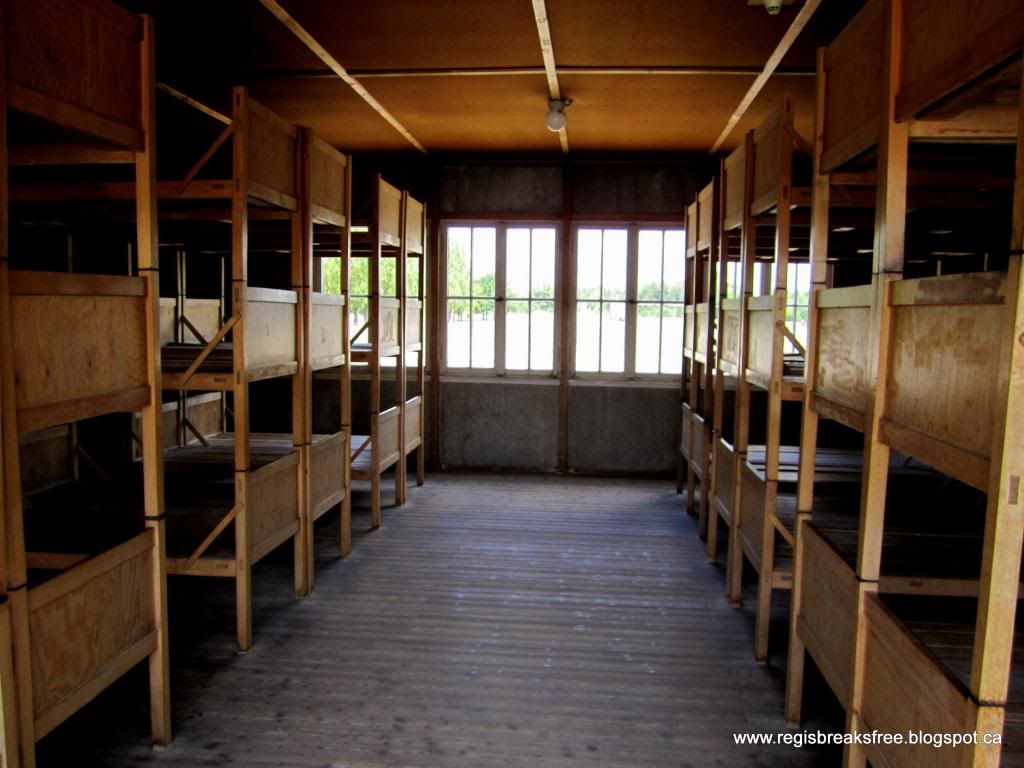 |
| Bunks inside the barracks. |
The building that used to have the kitchen, laundry, and showering facilities now serves as a museum. There is a lot of memorabilia and information. There are tour guides that will walk groups through which are great. I eavesdropped for a couple minutes on a group nearby, and then the guide yelled at me. So...no, they are not free :)
It was extremely interesting, but after a couple hours, it really becomes too much to take in...I felt drained afterward. It is very depressing.
 |
| Cells. |
It is a very unpleasant place, and it gave me the creeps.
At the very end of my visit, I reached the crematorium. I almost didn't go in, because it is a really horrifying place. Ok, so the building is just a building. But terrible things happened there, and I felt sick just thinking about it.
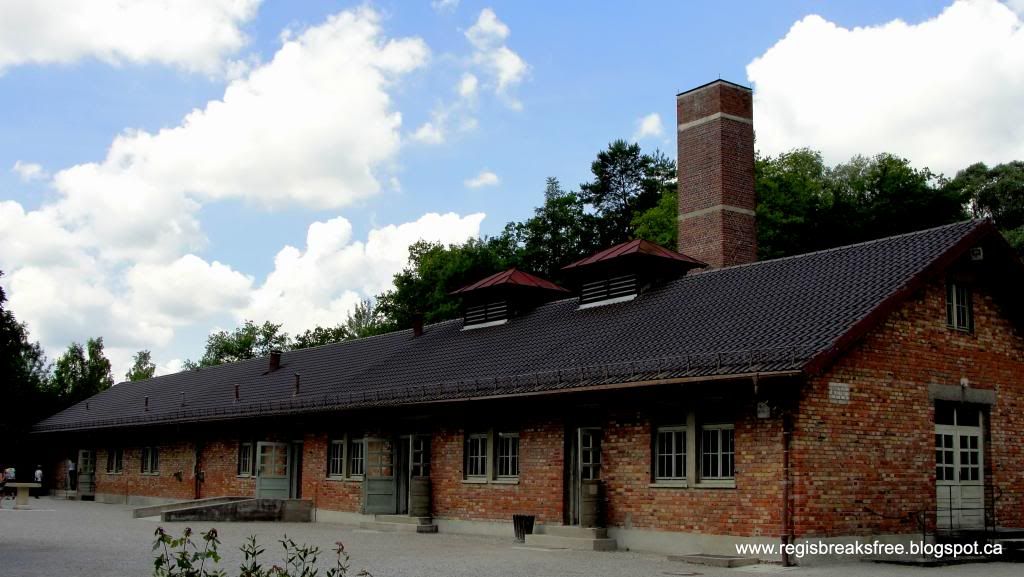 |
| The crematorium. |
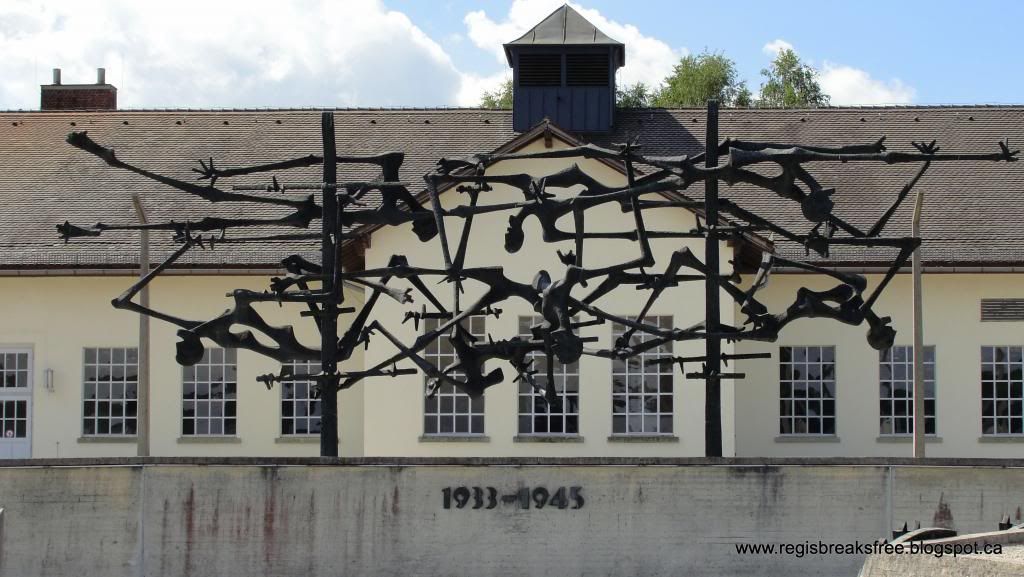 |
| "Never Again" The International Memorial |
It is a great place for some reflection on the past, and to pay respects to the thousands of innocents that died there, and in places like it. It is terrible to realize what humanity is capable of doing to its own kind. As I study Social Psychology in university this semester, it becomes clear that this is not an isolated phenomenon, but something that could happen anywhere to anyone, if there is enough fear and power at work. Dachau becomes a warning and a lesson against blind obedience to authority and pluralistic ignorance as a society.
I hope it is a lesson that will never have to be relearned.
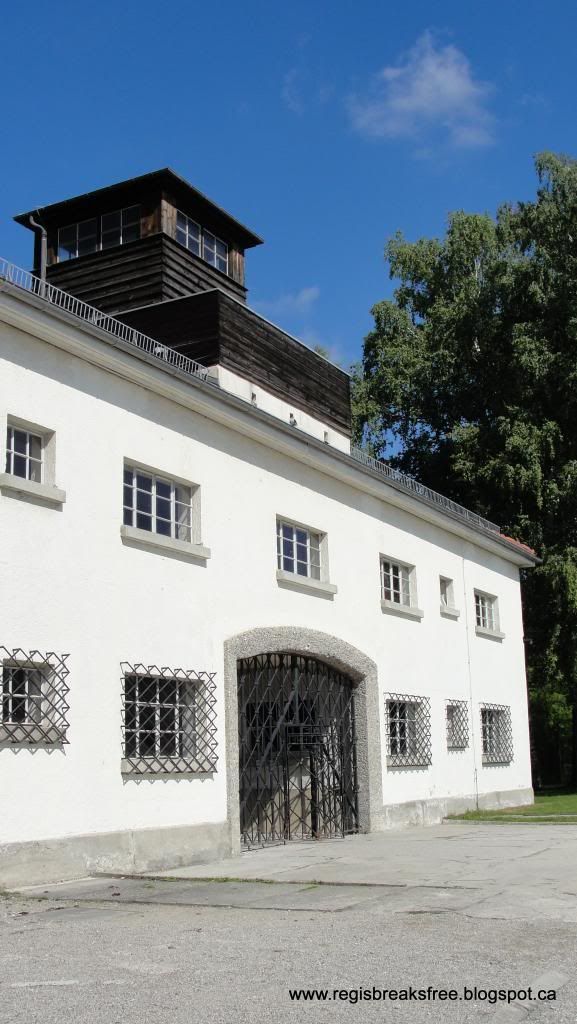
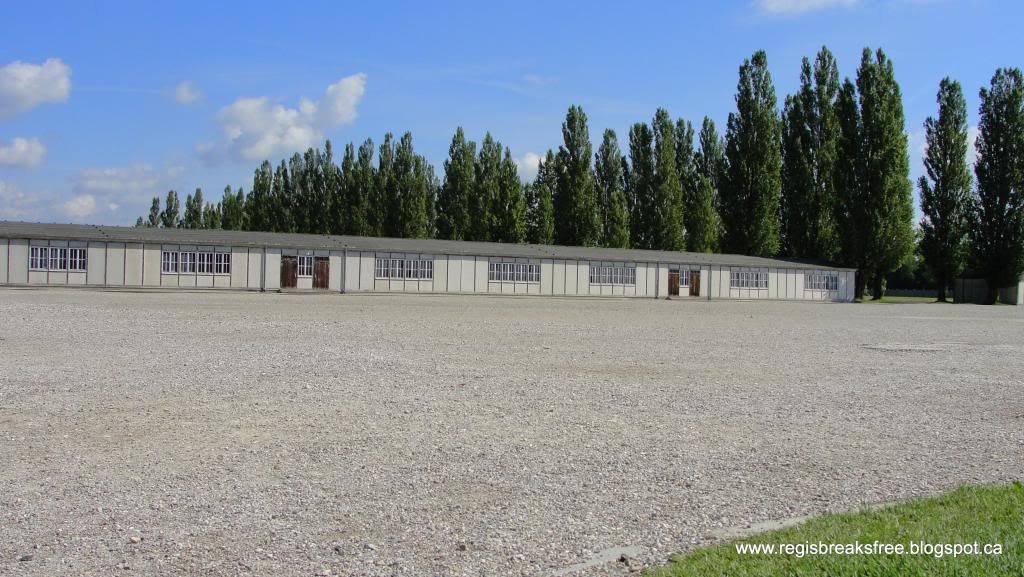
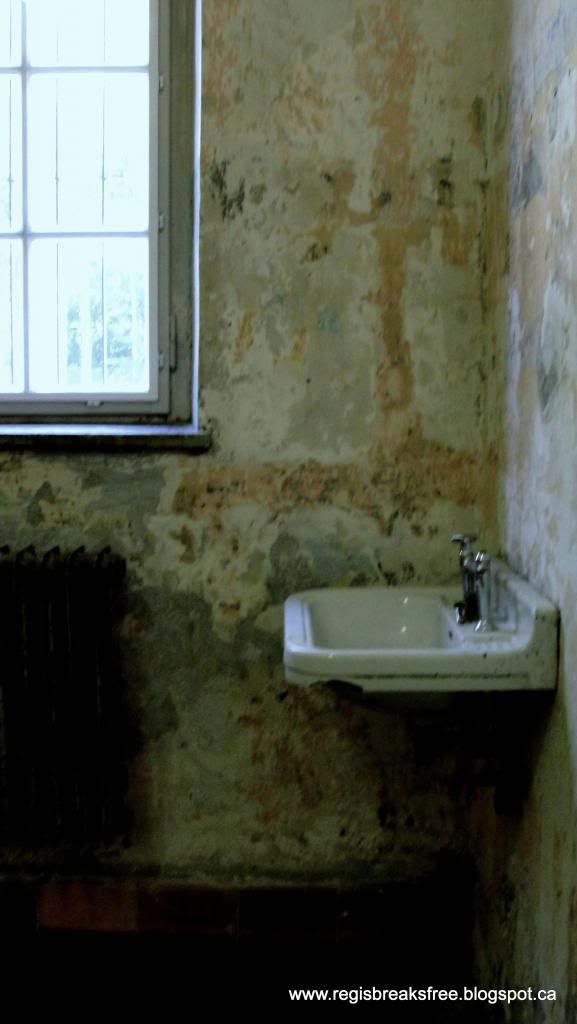
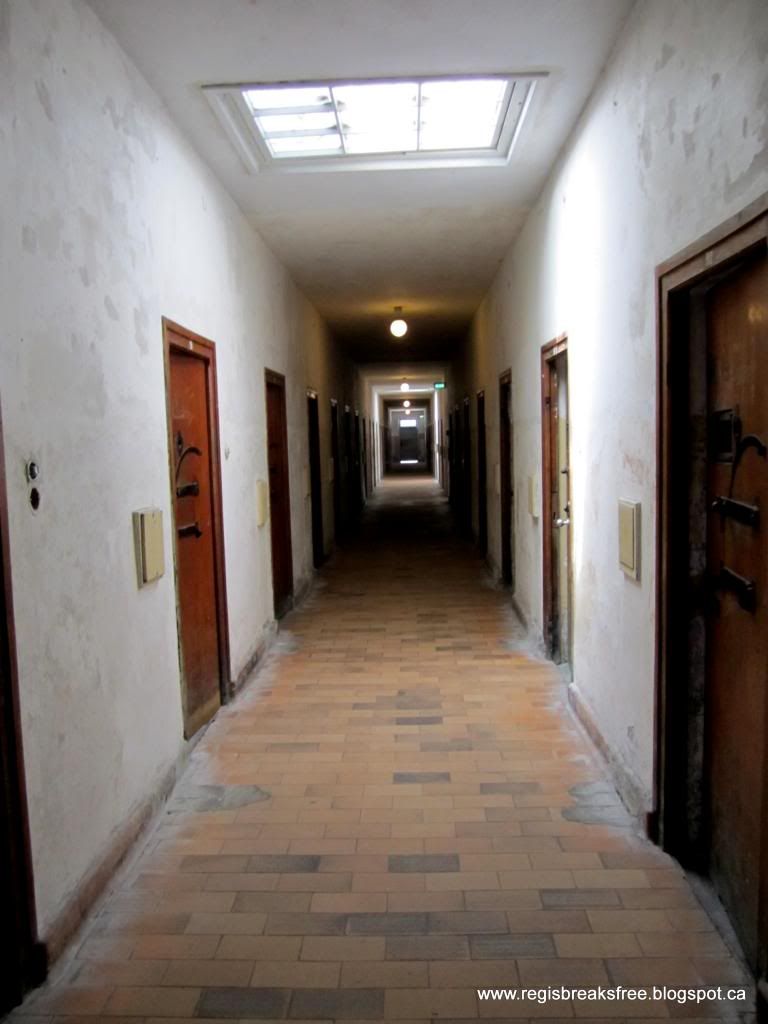
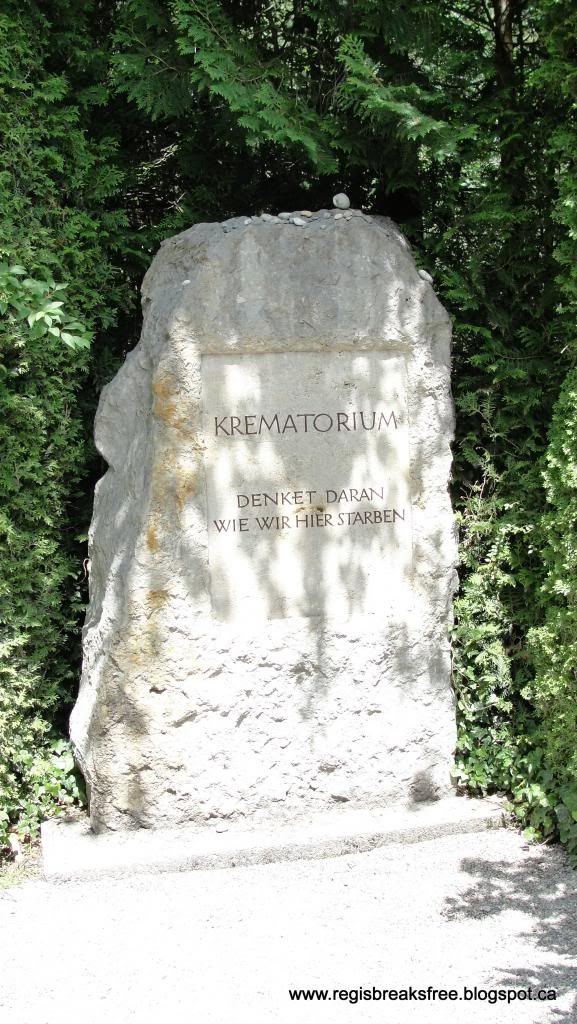
2 comments:
Well written, post, Jill. I would have a hard time going through and seeing the actual places these atrocious things happened. Reading about them and seeing them on video is hard enough. I remember in Gr. 12 our History Class went to the Symposium on the Holocaust , in downtown Vancouver. I was traumatized watching actual footage of some of what went on. So sad.
Yeah, this is a great post Jill. I was just thinking about this the other day and how sobering it was to be there...
Post a Comment